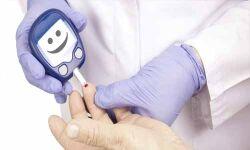Big Blood Sugar Swings In Diabetes Patients May Increase Heart Disease Risk
- byDoctor News Daily Team
- 30 July, 2025
- 0 Comments
- 0 Mins

BATON ROUGE, LOUISIANA -Researchers at Pennington Biomedical Research Center, Louisianahave found in a new study that in patients with type 2 diabetes, big swings in blood sugar levels between doctors' visits are associated with an increased risk of heart disease.Large visit‐to‐visit HbA1c variability is associated with an increased risk of cardiovascular disease in patients with type 2 diabetes. Severe hypoglycaemia may mediate the association between HbA1c variability and incident cardiovascular disease.
The study has been published in the journal Diabetes, Obesity & Metabolism.
The study looked at more than 29,000 patients with type 2 diabetes over a two-year period. Patients who already had heart disease were excluded.
The American Diabetes Association recommends adults with diabetes maintain an A1c, the average blood sugar level over the past two to three months, of less than 7 percent to reduce complications from diabetes, such as heart disease. However, studies - including this one -- have shown that wide swings in blood sugar levels may be a better predictor of diabetic complications than the A1c reading at any single doctor's office visit.
"The underlying mechanism for the relationship between wide variations in blood sugar levels between doctor's appointments and high risk of heart disease in patients with type 2 diabetes is unclear," said Gang Hu, MD, PhD, Associate Professor and Director, Chronic Disease Epidemiology Lab at Pennington Biomedical Research Center. "It's possible that episodes of severely low blood sugar may be the connection."
Research has shown that wide variations in blood sugar levels are associated with poor health outcomes and even death. A 2017 Johns Hopkins study found that one-third of people with diabetes hospitalized for a severe low blood sugar episode died within three years of the incident.
"We recommend that patients and their doctors implement therapies that can reduce wide swings in blood sugar levels and the associated episodes of severe low blood sugar," Dr. Hu said. "Our findings suggest that measuring the swings in blood hemoglobin A1c levels over a specific time - six months to a year, for example - could serve as a supplemental blood sugar target," he added.
For further reference log on to:
https://doi.org/10.1111/dom.14201
Disclaimer: This website is designed for healthcare professionals and serves solely for informational purposes.
The content provided should not be interpreted as medical advice, diagnosis, treatment recommendations, prescriptions, or endorsements of specific medical practices. It is not a replacement for professional medical consultation or the expertise of a licensed healthcare provider.
Given the ever-evolving nature of medical science, we strive to keep our information accurate and up to date. However, we do not guarantee the completeness or accuracy of the content.
If you come across any inconsistencies, please reach out to us at
admin@doctornewsdaily.com.
We do not support or endorse medical opinions, treatments, or recommendations that contradict the advice of qualified healthcare professionals.
By using this website, you agree to our
Terms of Use,
Privacy Policy, and
Advertisement Policy.
For further details, please review our
Full Disclaimer.
Recent News
Sleeping with Low Pillow Height May Increase Risk...
- 05 November, 2025
Novel Blood Test May Offer definitive diagnosis fo...
- 05 November, 2025
Esmolol Outperforms Landiolol in Reducing Mortalit...
- 05 November, 2025
Max Healthcare and Tata Institute for Genetics and...
- 05 November, 2025
Daily Newsletter
Get all the top stories from Blogs to keep track.


0 Comments
Post a comment
No comments yet. Be the first to comment!